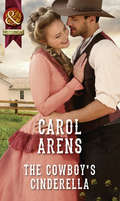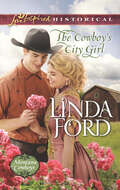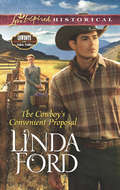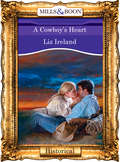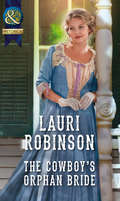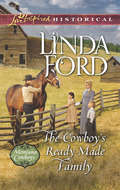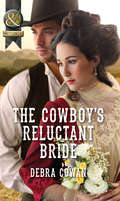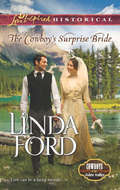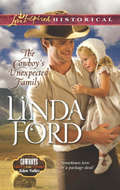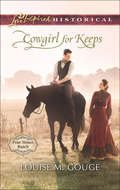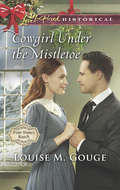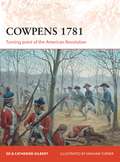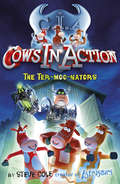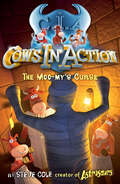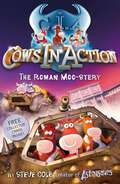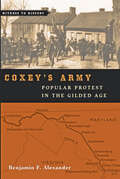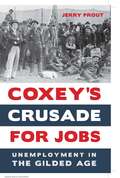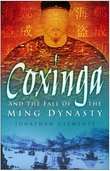- Table View
- List View
The Cowboy's Cinderella: A Marriage Of Rogues The Cowboy's Cinderella Sold To The Viking Warrior (Mills And Boon Historical Ser.)
by Carol ArensHis Fair Lady
The Cowboy's City Girl: The Cowboy's City Girl Special Delivery Baby The Reluctant Bridegroom His Prairie Sweetheart (Montana Cowboys #3)
by Linda FordBride on the Ranch Beatrice Doyle came to Montana to escape her father’s marriage plans for her—not to lasso herself a cowboy. Yet she can’t ignore the sparks that fly between her and Levi Harding while she’s at his family’s ranch, caring for his injured stepmother.
The Cowboy's Convenient Proposal (Cowboys of Eden Valley #3)
by Linda FordSECOND CHANCE RANCH She was a woman in need of protection. But trust is the one thing feisty Grace “Red” Henderson is sure she’ll never give to any man again—not even the cowboy who rescued her. Still, Ward Walker longs to protect the wary beauty and her little sister—in all the ways he couldn’t safeguard his own family.
A Cowboy's Heart (Mills And Boon Vintage 90s Modern Ser.)
by Liz IrelandWill Brockett Certainly Had His Hands Full His ex-fiancee had up and married while he'd been out on a cattle drive. Then she'd run away from her new husband, and as the town's part-time sheriff, it was up to Will to rescue her, and keep the residents of Possum Trot happy knowing that he was watching out for them.
The Cowboy's Orphan Bride: The Cowboy's Orphan Bride The Spaniard's Innocent Maiden Captive Of The Viking (Mills And Boon Historical Ser.)
by Lauri RobinsonReunited with the cowboy!
The Cowboy's Ready-Made Family: The Cowboy's Ready-made Family Pony Express Courtship The Marriage Bargain A Home Of Her Own (Montana Cowboys #1)
by Linda FordThe Cowboy Arrangement
The Cowboy's Reluctant Bride: The Cowboy's Reluctant Bride Secrets At Court The Rebel Captain's Royalist Bride (Mills And Boon Historical Ser.)
by Debra CowanFOR BETTER OR FOR WORSE…If there’s one thing Ivy Powell hates it’s accepting help! But after receiving menacing threats she’s left with no choice but to make a proposition to a ruggedly handsome cowboy. The only problem is Ivy’s first marriage destroyed her trust in men, and walking down the aisle again isn’t something she’ll undertake lightly…
The Cowboy's Surprise Bride: The Rancher's Surprise Triplets The Nanny's Temporary Triplets The Bride's Matchmaking Triplets (Cowboys of Eden Valley #1)
by Linda FordA NEW LIFE…IN A NEW WORLD Traveling to Canada’s Northwest Territories is a thrilling opportunity for Linette Edwards—and her chance to escape a dreaded marriage in England. She’s more than eager to accept Eddie Gardiner’s written invitation. How could she know that Eddie thinks he’s marrying not Linette, but her friend, Margaret?
The Cowboy's Unexpected Family (Cowboys of Eden Valley #2)
by Linda FordHer dream—on her terms With her own business, Cassie Godfrey is finally self-sufficient. But her plans are interrupted by four young orphans—and one persistent cowboy. If she’ll care for the children until their uncle claims them, Roper Jones will build Cassie’s house. To her business mind, the proposal makes sense.
Cowgirl for Keeps: The Marriage Agreement Cowgirl For Keeps The Lawman's Redemption Captive On The High Seas (Four Stones Ranch #3)
by Louise M. GougeLassoing the Cowgirl
Cowgirl Under The Mistletoe: Pony Express Christmas Bride Cowgirl Under The Mistletoe A Family Arrangement Wed On The Wagon Train (Four Stones Ranch #4)
by Louise M. GougeA Colorado Christmas Courtship
Cowpens 1781: Turning point of the American Revolution (Campaign #283)
by Ed Gilbert Catherine GilbertThis is a blistering account of the battle of Cowpens, a short, sharp conflict which marked a crucial turning point in the American Revolution. With Lt. Col. Banastre Tarleton and the British troops in hot pursuit, Daniel Morgan, leading a small force of 700 Continentals and militia, chose the Cowpens as the battlefield in which to make a stand. The two forces clashed for barely more than 45 minutes, yet this brief battle shaped the outcome of the War in the South and decisively influenced the conflict as a whole. The authors provide a shrewd analysis of what was perhaps the finest tactical performance of the entire war. Bird's-eye views, vivid illustrations and detailed maps illuminate the dynamism of this clash between two of the most famous commanders of the War of Independence.
Cowpens 1781: Turning point of the American Revolution (Campaign)
by Graham Turner Ed Gilbert Catherine GilbertThis is a blistering account of the battle of Cowpens, a short, sharp conflict which marked a crucial turning point in the American Revolution. With Lt. Col. Banastre Tarleton and the British troops in hot pursuit, Daniel Morgan, leading a small force of 700 Continentals and militia, chose the Cowpens as the battlefield in which to make a stand. The two forces clashed for barely more than 45 minutes, yet this brief battle shaped the outcome of the War in the South and decisively influenced the conflict as a whole. The authors provide a shrewd analysis of what was perhaps the finest tactical performance of the entire war. Bird's-eye views, vivid illustrations and detailed maps illuminate the dynamism of this clash between two of the most famous commanders of the War of Independence.
Cows in Action 1: The Ter-moo-nators (Cows In Action #10)
by Steve ColeAnother hilarious, action-packed adventure from the Astro-nomically popular Steve Cole.Genius cow Professor McMoo and his trusty sidekicks, Pat and Bo, are the star agents of the C.I.A. - short for COWS IN ACTION! They travel through time, fighting evil bulls from the future and keeping history on the right track . . . When Professor McMoo invents a brilliant TIME MACHINE, he and his friends are soon attacked by a terrifying TER-MOO-NATOR - a deadly robo-cow who wants to mess with the past and change the future! And that's only the start of an incredible ADVENTURE that takes McMoo, Pat and Bo from a cow paradise in the future to the SCARY dungeons of King Henry VIII . . . It's time for action. COWS IN ACTIONPerfect for children ready to start reading chapter books by themselves.
Cows in Action 2: Cows In Action 2 (Cows In Action #7)
by Steve ColeAnother hilarious, action-packed adventure from the Astro-nomically popular Steve Cole.Genius cow Professor McMoo and his trusty sidekicks, Pat and Bo, are star agents of the C.I.A. - short for COWS IN ACTION! They travel through time, fighting evil bulls from the future and keeping history on the right track . . . In ANCIENT EGYPT, a monstrous moo-my has come to life and kicked the PHARAOH off his throne. Sent to investigate, the C.I.A agents face PERIL in the pyramids and nightmares on the Nile. Can they foil a TERRIFYING time-crime before the whole WORLD falls to the moo-my's curse?It's time for action. COWS IN ACTIONAnother UDDERLY hilarious title featuring the intrepid Professor McMoo and his team of time-travelling cows - perfect for children ready to start reading chapter books by themselves.
Cows in Action 3: The Roman Moo-stery (Cows In Action #9)
by Steve ColeAnother hilarious, action-packed adventure from the Astro-nomically popular Steve Cole.Genius cow Professor McMoo and his trusty sidekicks, Pat and Bo, are star agents of the C.I.A. - short for COWS IN ACTION! They travel through time, fighting evil bulls from the future and keeping history on the right track . . .The C.I.A. travel back to the ROMAN EMPIRE, where TER-MOO-NATORS are turning innocent bulls into WARRIORS! With all Rome at risk, Mc Moo, Pat and Bo battle GLADIATORS and race to the death in CHARIOTS, trying to solve a moo-stery that could wreck history FOR EVER!It's time for action. COWS IN ACTION.
Coxey's Army: Popular Protest in the Gilded Age (Witness to History)
by Benjamin F. AlexanderIn 1893, after a major British bank failure, a run on U.S. gold reserves, and a late-June stock-market crash, America was in the throes of a serious economic depression. Unemployment rose, foreclosures climbed, and popular unrest mounted. By the following spring, businessman and Populist agitator Jacob S. Coxey was fed up with government inactivity in the face of the crisis. With the help of eccentric showman Carl Browne, he led a group of several hundred unemployed wage earners, small farmers, and crossroads merchants on a march from Massillon, Ohio, to Washington, D.C., to present a "petition in boots" for government-financed jobs building and repairing the nation’s roads. On May 1, the Coxeyites descended on the center of government, where Coxey attempted to deliver a speech on the Capitol steps. The police attacked, a melee ensued, and Coxey and Browne spent a month in jail. Meanwhile, other Coxey-inspired contingents were on their way east from places as far away as San Francisco and Portland. Some of them even hijacked trains along the way. Who was Coxey, and what motivated himâ€�along with the angry marchers who joined his cause? What did other Americans think of the protesters? Was there ever any chance that the protesters’ demands would be met? Where did the agitators fit in with the politics of their day, and how did their actions jibe with the other labor-related protests happening that year? In this concise and gripping narrative, Benjamin F. Alexander contextualizes the march by vividly describing the misery wrought by the Panic of ’93. Alexander brings both Coxey and his fellow leaders to life, along with the reporters and spies who traveled with them and the diverse group of captivated newspaper readers who followed the progress of the marches and train heists.Coxey’s Army explains how the demands of the Coxeyitesâ€�far from being the wild schemes of a small group of cranksâ€�fit into a larger history of economic theories that received serious attention long before and long after the Coxey march. Despite running a gauntlet of ridicule, the marchers laid down a rough outline of what, some forty years later, emerged as the New Deal.
Coxey’s Crusade for Jobs: Unemployment in the Gilded Age
by Jerry ProutIn the depths of a depression in 1894, a highly successful Gilded Age businessman named Jacob Coxey led a group of jobless men on a march from his hometown of Massillon, Ohio, to the steps of the nation's Capitol. Though a financial panic and the resulting widespread business failures caused millions of Americans to be without work at the time, the word unemployment was rarely used and generally misunderstood. In an era that worshipped the self-reliant individual who triumphed in a laissez-faire market, the out-of-work "tramp" was disparaged as weak or flawed, and undeserving of assistance. Private charities were unable to meet the needs of the jobless, and only a few communities experimented with public works programs. Despite these limitations, Coxey conceived a plan to put millions back to work building a nationwide system of roads and drew attention to his idea with the march to Washington. In Coxey's Crusade for Jobs, Jerry Prout recounts Coxey's story and adds depth and context by focusing on the reporters who were embedded in the march. Their fascinating depictions of life on the road occupied the headlines and front pages of America's newspapers for more than a month, turning the spectacle into a serialized drama. These accounts humanized the idea of unemployment and helped Americans realize that in a new industrial economy, unemployment was not going away and the unemployed deserved attention. This unique study will appeal to scholars and students interested in the Gilded Age and US and labor history.
Coxinga and the Fall of the Ming Dynasty: Coxinga And The Fall Of The Ming Dynasty
by Jonathan ClementsThis is the fantastic true story of the infamous pirate; Coxinga who became king of Taiwan and was made a god - twice. From humble origins, Coxinga's father became the richest man in China and Admiral of the Emperor's navy during the Ming Dynasty. As his eldest son, Coxinga was given the best education and developed a love of poetry and the study of Confucius. From this unlikely beginning, it took the invasion of south China by the Manchu and the subsequent loss of both his parents - his father defected to the Manchu and his mother, a Japanese Samurai, died in battle - to turn Coxinga from scholar to warrior. Fiercely loyal to his exiled Emperor, Coxinga fought against overwhelming odds until his defeat drove him out to sea and over to Taiwan - at the time a lawless set of islands inhabited by cannibals. Self-styled king of Taiwan, Coxinga died at the moment of his triumph. His descendants ruled the island for two decades.
Cox's Fragmenta: An Historical Miscellany (History Press Ser.)
by Simon MurphyErotic misdemeanours in an Irish bean-field, the recipe for a frog barometer fresh from the French court, a parrot convicted of heresy and burnt at the stake in Spain and a Dutch stage effect for ejecting a wig (by means of a spring) during Hamlet’s ghost scene are just some of the masterpieces of understated journalism collected by Francis Cox and contained in his Fragmenta. At ninety-seven volumes, Cox’s scrapbook has to be one of the largest collections of journalistic ephemera ever. For sixty years during the late eighteenth and early nineteenth centuries he accumulated articles on everything from duels to playhouses, and foreign travel to warfare. Simon Murphy has selected the most amusing and bizarre to create an historical miscellany which will intrigue and delight.
Cox's Fragmenta II: Further Folios from History
by Simon MurphyA presumptuous bear imposing on a coachful of ladies, how to behave in the British Museum, the dangers of dallying with a black-eyed girl and the Royal Navy’s inaugural biscuit machine are just some of the masterpieces of understated journalism collected by Francis Cox and contained in his Fragmenta. At ninety-four volumes, Cox’s scrapbook has to be one of the largest collections of journalistic ephemera ever. For sixty years during the late eighteenth and early nineteenth centuries he accumulated articles on everything from duels to playhouses, and foreign travel to warfare. Following on from the success of the first volume, Simon Murphy has selected more bizarre stories to create another delightful historical miscellany which will intrigue and amuse.
Coxsackie: The Life and Death of Prison Reform (Reconfiguring American Political History)
by Joseph F. SpillaneShould prisons attempt reform and uplift inmates or, by means of principled punishment, deter them from further wrongdoing? This debate has raged in Western Europe and in the United States at least since the late eighteenth century. Joseph F. Spillane examines the failure of progressive reform in New York State by focusing on Coxsackie, a New Deal reformatory built for young male offenders. Opened in 1935 to serve "adolescents adrift," Coxsackie instead became an unstable and brutalizing prison. From the start, the liberal impulse underpinning the prison’s mission was overwhelmed by challenges it was unequipped or unwilling to face—drugs, gangs, and racial conflict.Spillane draws on detailed prison records to reconstruct a life behind bars in which "ungovernable" young men posed constant challenges to racial and cultural order. The New Deal order of the prison was unstable from the start; the politics of punishment quickly became the politics of race and social exclusion, and efforts to save liberal reform in postwar New York only deepened its failures. In 1977, inmates took hostages to focus attention on their grievances. The result was stricter discipline and an end to any pretense that Coxsackie was a reform institution.Why did the prison fail? For answers, Spillane immerses readers in the changing culture and racial makeup of the U.S. prison system and borrows from studies of colonial prisons, which emblematized efforts by an exploitative regime to impose cultural and racial restraint on others.In today’s era of mass incarceration, prisons have become conflict-ridden warehouses and powerful symbols of racism and inequality. This account challenges the conventional wisdom that America’s prison crisis is of comparatively recent vintage, showing instead how a racial and punitive system of control emerged from the ashes of a progressive ideal.
Coxsackie: The Life and Death of Prison Reform (Reconfiguring American Political History)
by Joseph F. SpillaneShould prisons attempt reform and uplift inmates or, by means of principled punishment, deter them from further wrongdoing? This debate has raged in Western Europe and in the United States at least since the late eighteenth century. Joseph F. Spillane examines the failure of progressive reform in New York State by focusing on Coxsackie, a New Deal reformatory built for young male offenders. Opened in 1935 to serve "adolescents adrift," Coxsackie instead became an unstable and brutalizing prison. From the start, the liberal impulse underpinning the prison’s mission was overwhelmed by challenges it was unequipped or unwilling to faceâ€�drugs, gangs, and racial conflict.Spillane draws on detailed prison records to reconstruct a life behind bars in which "ungovernable" young men posed constant challenges to racial and cultural order. The New Deal order of the prison was unstable from the start; the politics of punishment quickly became the politics of race and social exclusion, and efforts to save liberal reform in postwar New York only deepened its failures. In 1977, inmates took hostages to focus attention on their grievances. The result was stricter discipline and an end to any pretense that Coxsackie was a reform institution.Why did the prison fail? For answers, Spillane immerses readers in the changing culture and racial makeup of the U.S. prison system and borrows from studies of colonial prisons, which emblematized efforts by an exploitative regime to impose cultural and racial restraint on others.In today’s era of mass incarceration, prisons have become conflict-ridden warehouses and powerful symbols of racism and inequality. This account challenges the conventional wisdom that America’s prison crisis is of comparatively recent vintage, showing instead how a racial and punitive system of control emerged from the ashes of a progressive ideal.
Coyote America: A Natural and Supernatural History
by Dan FloresThe New York Times best-selling account of how coyotes--long the target of an extermination policy--spread to every corner of the United States Finalist for the PEN/E.O. Wilson Literary Science Writing Award"A masterly synthesis of scientific research and personal observation." -Wall Street JournalLegends don't come close to capturing the incredible story of the coyote In the face of centuries of campaigns of annihilation employing gases, helicopters, and engineered epidemics, coyotes didn't just survive, they thrived, expanding across the continent from Alaska to New York. In the war between humans and coyotes, coyotes have won, hands-down. Coyote America is the illuminating five-million-year biography of this extraordinary animal, from its origins to its apotheosis. It is one of the great epics of our time.
Coyote Nation: Sexuality, Race, and Conquest in Modernizing New Mexico, 1880-1920 (Worlds of Desire: The Chicago Series on Sexuality, Gender, and Culture)
by Pablo MitchellWith the arrival of the transcontinental railroad in the 1880s came the emergence of a modern and profoundly multicultural New Mexico. Native Americans, working-class Mexicans, elite Hispanos, and black and white newcomers all commingled and interacted in the territory in ways that had not been previously possible. But what did it mean to be white in this multiethnic milieu? And how did ideas of sexuality and racial supremacy shape ideas of citizenry and determine who would govern the region? Coyote Nation considers these questions as it explores how New Mexicans evaluated and categorized racial identities through bodily practices. Where ethnic groups were numerous and—in the wake of miscegenation—often difficult to discern, the ways one dressed, bathed, spoke, gestured, or even stood were largely instrumental in conveying one's race. Even such practices as cutting one's hair, shopping, drinking alcohol, or embalming a deceased loved one could inextricably link a person to a very specific racial identity. A fascinating history of an extraordinarily plural and polyglot region, Coyote Nation will be of value to historians of race and ethnicity in American culture.
